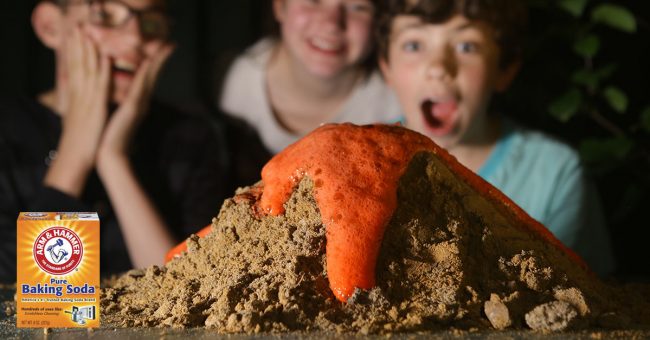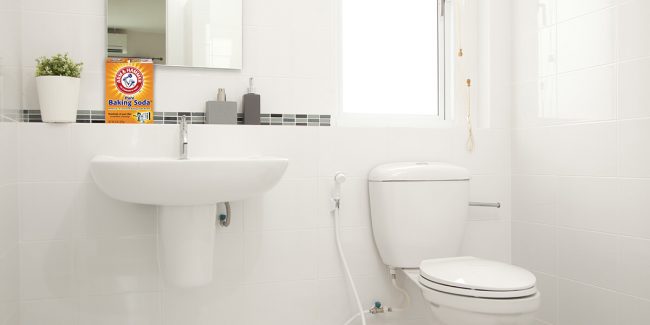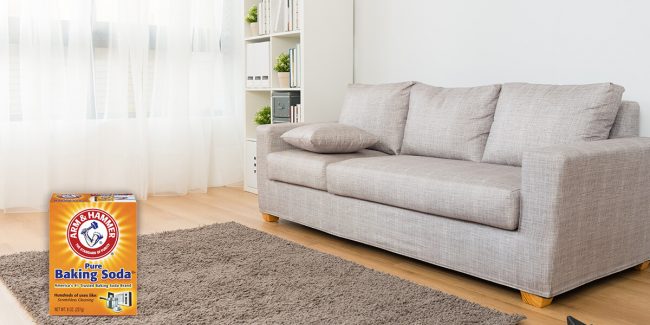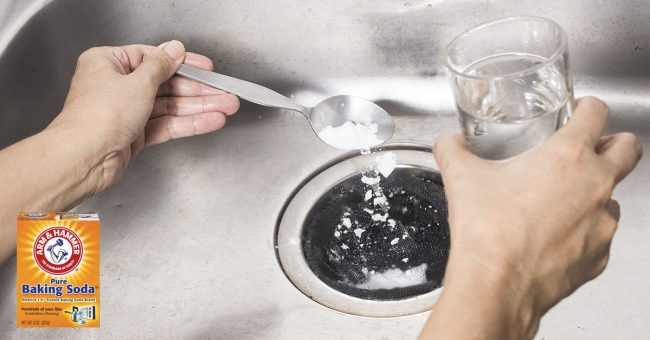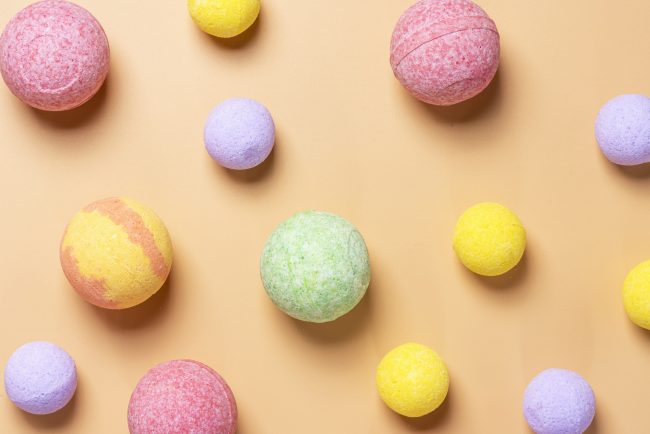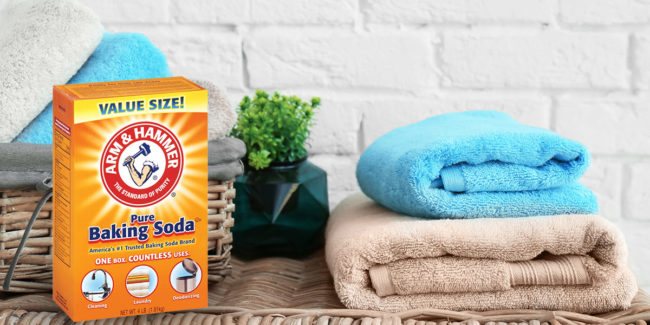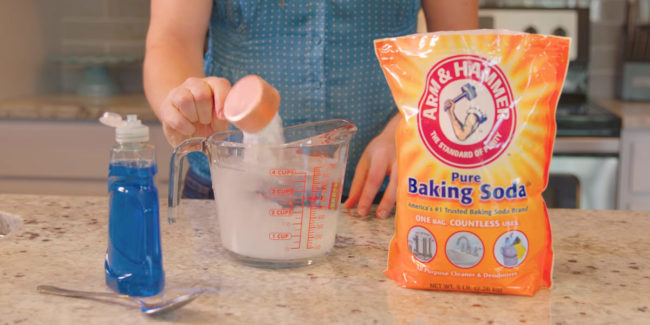Adding a bath bomb to your bath can make it a truly luxurious experience. The fizzing can add relaxing, exfoliating, moisturizing, cleansing or therapeutic elements and create a delightful sensory experience. You can make DIY homemade bath bombs with a few simple ingredients from your kitchen. Why is Baking Soda Used in Bath Bombs? The main ingredient that powers a fizzy bath bomb is sodium bicarbonate, also known as baking soda. If you’ve ever seen an experiment where baking soda combines with vinegar to make a foamy reaction, that same principle is at work behind a bath fizzy. Bath bombs work by combining the higher pH alkali (baking soda) with a low pH dry acid (such as citric acid). When those two ingredients come in contact with water, they produce carbon dioxide, which you see in the form of air bubbles or fizz. Beyond baking soda and a dry acid, bath bombs typically contain a modulator, such as corn starch. The modulator prevents the two active ingredients from fizzing before the bath bomb is put in the tub and slows down the fizzing reaction so it lasts several minutes once it’s in the water. Bath bombs also tend to include food coloring and a binding agent that keeps the ingredients packed together in the molded shape. Often this is some type of oil, or other ingredient like witch hazel, isopropyl alcohol, or water. Many DIY bath bomb recipes also include essential oils and salts for added aromatherapy or to help sooth sore muscles or moisturize skin. Additionally, some recipes can include surprises inside the bath bomb like flower petals, biodegradable glitter, or toys that are just for fun and do not affect how a bath fizzy works. How Do You Make a Bath Bomb With Baking Soda? Here is one of our favorite baking soda bath bomb recipes, which makes 2-5 bath bombs, depending on the size mold you use. Ingredients: 4 tsp corn starch 8 tsp unsweetened powdered lemonade mix 1/3 cup ARM & HAMMER™ Baking Soda 1/3 cup mineral oil or baby oil Few drops of liquid food coloring Instructions: Combine all dry ingredients in a larger bowl. Whisk them together to ensure they are evenly mixed. In a separate small bowl, measure the mineral oil and add a few drops of your favorite food coloring. Do not mix colors to avoid making a muddy-looking mixture. If you want to make a multi-colored bath bomb, separate your ingredients into several bowls and add a different coloring to each. Slowly add the liquid mixture to the powdered mixture, a little at a time. Use a spoon or your fingers to combine ingredients until you have a texture that is similar to damp sand. Quickly get your preferred bath fizzy mold or a cupcake tin and very tightly pack the damp ingredients into the mold. If you do not have a mold, put on some kitchen or medical gloves so the ingredients don’t stick to your hands and shape the bath salts into balls, as if you were rolling meatballs. You want to do this right away, so the ingredients don’t begin to dry out before they are shaped. Lay your rolled bath bombs on a sheet of wax paper. Do not use aluminum foil as the metal will react with the ingredients. Leave molded bath bombs in their molds until dry. Let your bath bombs dry for a minimum of 24 hours. Drying for 48 hours is recommended for best results. Bath bombs must be completely dry before use or they won’t fizz and spread through the water. Turn your mold upside down and tap lightly if necessary to release the dry bath fizzy into your hand. Store your dry bath bombs out of reach of children and pets and wrapped in cellophane to prevent moisture. Do not store in a metal container. All About That Base … and That Acid How much baking soda you put in bath bombs depends on how large of a batch you are making, but the general rule is a 2-to-1 ratio of baking soda to powdered citric acid. Sometimes the word “acid” gives people pause but the ingredient is called an “acid” because of the compound’s low pH, not because it will eat through metal. The citric acid and baking soda in bath bombs neutralize each other and create the fun fizzing action. Food grade citric acid is commonly available online if you can’t find it in your local store (it’s often with the canning supplies). However, there are recipes for bath bombs that don’t require it, such as the one we listed above. Homemade Foaming Bath Bomb This basic bath bomb recipe adds Epsom salts to help sooth sore feet or muscles. You can modify this recipe by adding a foaming agent if you want your bath bomb to make lasting bubbles as well as fizz. 1 cup baking soda 1/2 cup powdered citric acid 1/2 cup Epsom salt 1/2 cup cornstarch Up to 3/4 tsp. water or witch hazel (usually found in the first aid aisles) 2 tsp essential oil (lavender, eucalyptus, rose are all popular for the bath) 2 tsp oil (jojoba, sweet almond, olive, mineral or baby oil) A few drops of food coloring A mold of your choice, such as regular or mini-muffin tins, candy pans, or round plastic molds specifically for bath bombs Follow the procedure listed above to mix ingredients and to press and dry your bath bombs. If you’re looking for a more bubbly bath experience, you can add an ingredient to your bath bomb recipe that creates foaming, instead of plain fizzing. This foaming agent is Sodium Lauryl Sulfoacetate a compound derived from coconut or palm oil and used to make soap, powdered bubble baths, and scrubs as well as bath bombs. It’s harder to find in your local stores, but you can purchase it easily online. To make a bath bomb that creates a luxurious sheet of foam on the top of the water and holds its fragrance longer, try…

